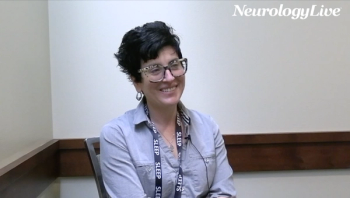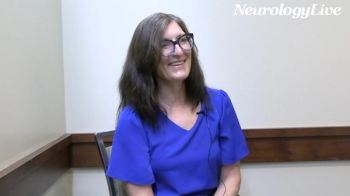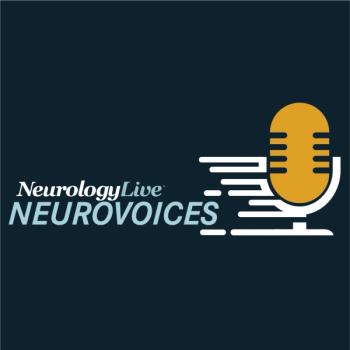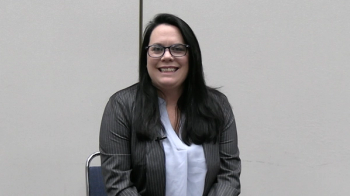
A new phase 2 study explores samelisant's potential to treat cataplexy in narcolepsy type 1, promising improved patient outcomes and safety.

A new phase 2 study explores samelisant's potential to treat cataplexy in narcolepsy type 1, promising improved patient outcomes and safety.

New 5-year findings from the National RLS Opioid Registry presented at SLEEP 2025 highlight the long-term stability and dose trends of low-dose opioid therapy in patients with restless legs syndrome.

Switching to once-nightly sodium oxybate significantly improves sleep-related eating disorder in narcolepsy patients, enhancing overall treatment outcomes.

An interim analysis of an ongoing study suggested that the tonic motor activation demonstrated comparable short-term outcomes for both painful and painless forms of restless legs syndrome.

The sleep and stroke neurologist at Barrow Neurological Institute detailed how improving glymphatic function may prevent strokes and enhance recovery from both hemorrhagic and ischemic events. [WATCH TIME: 5 minutes]

Findings from the Jazz DUET study presented at SLEEP 2025 showed that low-sodium oxybate reduced daytime sleepiness and improved sleep parameters in patients with narcolepsy types 1 and 2.

The neuropathologist at Mayo Clinic Florida discussed her presentation from SLEEP 2025, outlining how early tau accumulation in wake-promoting brain regions contributes to sleep disturbances before Alzheimer disease symptoms arise. [WATCH TIME: 3 minutes]

The neuroscientist and physician at Mount Sinai explored the role of sleep-dependent brain clearance in Alzheimer disease and how emerging research is challenging longstanding assumptions.

Data from a pair of phase 3 trials suggest that tirzepatide treatment may improve patient-reported measures of sleepiness in individuals with obstructive sleep apnea and obesity.

The professor of psychology at the University of Tulsa provided insight on how her team adapted CBT for children with nightmares using a learning-theory approach that targets the fear-avoidance cycle. [WATCH TIME: 5 minutes]

New phase 2 trial data presented at SLEEP 2025 suggest TAK-861 significantly decreased microsleep frequency and delayed onset of first microsleep in individuals with narcolepsy type 1.

New analysis reveals insights on hypnagogic and hypnopompic hallucinations in narcolepsy patients treated with once-nightly sodium oxybate.

The director of sleep health at Flinders University explained how new mechanistic insights are enabling targeted pharmacotherapy and trait-based treatment for obstructive sleep apnea. [WATCH TIME: 3 minutes]

A newly presented actigraphy-based algorithm demonstrated high accuracy in detecting daytime naps, offering insights into napping behavior changes in patients with narcolepsy type 1.

A recent analysis reveals the safety profile of once-nightly sodium oxybate for narcolepsy, highlighting low discontinuation rates and common adverse events.

A new study presented at SLEEP 2025 reported that more than one-quarter of pregnant women experienced restless legs syndrome, with prior history of the condition emerging as a significant risk factor.

New research reveals solriamfetol significantly enhances neuropsychological outcomes in patients with obstructive sleep apnea and excessive daytime sleepiness.

Recent research reveals that transcranial direct current stimulation (tDCS) shows no significant benefits for insomnia, highlighting the need for larger studies.

A newly presented study at SLEEP 2025 explored the practicality of various methods, such as the Apple Watch and polysomnogram, for assessing sleep in pediatric patients with Lennox-Gastaut syndrome.

A new study evaluates the effectiveness and safety of once-nightly sodium oxybate for narcolepsy, aiming to enhance patient treatment experiences.

A phase 2 study shows samelisant significantly reduces excessive daytime sleepiness in narcolepsy, paving the way for further research and development.

The therapeutic head for Clinical Development Neuroscience at Jazz Pharmaceuticals provided clinical insight on a new study evaluating the effect of switching from high- to low-sodium oxybate on blood pressure. [WATCH TIME: 4 minutes]

Mind Moments®, a podcast from NeurologyLive®, brings you an exclusive interview with Anne Marie Morse, DO, FAAN. [LISTEN TIME: 18 minutes]

Additional data of a phase 2 study presented at the 2024 SLEEP Annual Meeting demonstrated that pitolisant significantly improved in secondary end points among patients with myotonic dystrophy type 1.

The director of the Center for Sleep and Cardiovascular Outcomes Research at University of Pittsburgh talked about a phase 3 trial assessing a pharmaceutical treatment, AD109, in sleep apnea.

The assistant professor at the University of South Florida provided perspective on the influence of circadian rhythm in neurocognitive health and the possibilities of screening for circadian rhythm issues for large-scale clinical trials. [WATCH TIME: 4 minutes]

Eric Herzog, PhD, a chronobiologist and professor of biology and neuroscience at Washington University, provided thoughts on a number of topics related to sleep during pregnancy and the significance of maintaining circadian rhythms.

The pediatric neurologist and sleep medicine specialist at Geisinger Medical Center provided commentary on the complexities with treating cataplexy, and the misperceptions patients may have about how to manage their condition. [WATCH TIME: 3 minutes]

Ron Grunstein, MD, PhD, head of Sleep and Circadian Research at the Woolcock Institute of Medical Research, provided commentary on early, promising data regarding investigational agent ALKS 2680 in patients with narcolepsy type 1.

The director of the Center for Sleep and Cardiovascular Outcomes Research at University of Pittsburgh talked about a novel pharmacologic treatment that shows potential as an alternative to continuous positive airway pressure for sleep apnea. [WATCH TIME: 5 minutes]